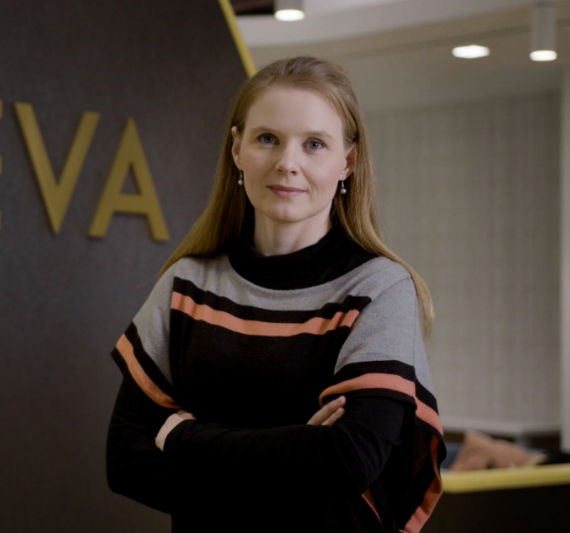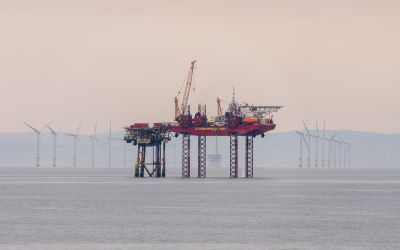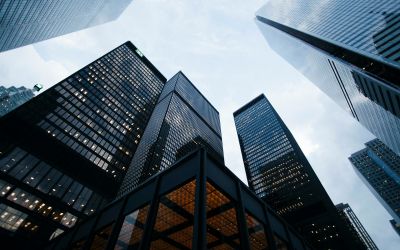Lisa Wee on how digital solutions drive the transition to net zero and help cut industrial emissions
Climate Action caught up with Lisa Wee, Global Head of Sustainability at AVEVA, to discuss how digital solutions drive the transition to net zero and help cut industrial emissions.

Climate Action caught up with Lisa Wee, Global Head of Sustainability at AVEVA, to discuss how digital solutions drive the transition to net zero and help cut industrial emissions.
How did Aveva participate and engage at COP28?
AVEVA has been present at COP for the last three years. This year our senior delegation participated in over 40 events, from CEO panel discussions at the European Union Pavilion with the European Green Digital Coalition (EGDC) and Smart Markets Initiative (SMI) to interactive discussions with some of our strategic sustainability partners including, Climate Action, International Chamber of Commerce (ICC), Corporate Leaders Group UK, TechUK and Microsoft.
This year, we were a proud sponsor of Climate Action’s Innovation Zone where we discussed solutions to the industrial decarbonization challenge, as well as innovations in green hydrogen production, as part of the UK Climate Leaders Forum and Hydrogen Transition Summit.
AVEVA also sponsored the International Chamber of Commerce’s Pavilion in the Blue Zone. As part of this sponsorship, AVEVA's CEO, Caspar Herzberg, hosted a panel discussion on digital decarbonization with sustainability leaders from Cemex, Bayer, Nestle and the former UK Energy Minister, Chris Skidmore.
AVEVA attends COP because we are wholly committed to leading by example in the fight against climate change. We want more organisation to drive the transition to net zero and we believe that to enable systemic change, we need collaborative action from industries, governments and technology providers.
Having attended the past three COP events, what do you consider to be the key changes to discourse and momentum at the most recent COP and how must the world capitalize on this to drive lasting change?
There was an enhanced focus on inclusivity at COP28, compared to previous COPs I’ve participated in. Throughout the COP28 process, the United Arab Emirates and UN Climate Change, reinforced the importance of an inclusive, transparent, and respectful process. This was reflected in the representation of subnational governments, youth, local communities, women and Indigenous People at COP28. Climate change is a global phenomenon impacting communities and regions across the world to varying degrees so ensuring inclusivity in climate negotiations is key to a just and equitable energy transition.
As we look to COP29 in Azerbaijan, focus will now turn to developing the financing mechanisms to enable the net zero transition, particularly in the Global South. As highlighted recently by the Climate Change Committee1, there remains a substantial gap in finance presenting a major barrier to accelerating climate action. Ahead of COP30 in Brazil, countries will need to develop their ‘Nationally Determined Contributions (NDC) emissions reduction pledges’ for 2035, due for submission to the UN in early 2025. For many countries in the Global South, their ability to present robust and ambitious pledges will in part depend on the efforts over the next year, and at COP29, by the public and private sector to provide sufficient financing mechanisms to respond and adapt to the climate challenge.
How can AI and digital solutions drive the transition to net zero and help cut industrial emissions?
The World Economic Forum calculates that digital technologies at scale could cut emissions by up to 20% by 20502. Harnessing technological solutions is therefore key to reaching net zero targets around the world. In today’s industrial sector, there is an ever-growing demand for access to real-time, reliable data. Digitalization helps companies to track and measure operational efficiency and agility and take action to meet their ambitious climate targets while also complying with mandatory ESG reporting legislation. Increasingly, industrial companies are finding they will need to change how they think about and interact with data in order to meet the ambitious COP28 targets and many are also looking to leverage AI to gain new levels of insight and make faster progress.
AGL, as an example, is one of Australia’s leading energy companies with a commitment to be net zero by 2050. Accelerating the deployment of renewables forms part of its ambitious climate transition plan and they use AVEVA PI System to gather consistent and reliable data on their wind turbines infrastructure to avoid asset failures and optimize production. By collecting standardized, real-time data on turbine performance they discovered aging wind vanes had difficulty facing into the wind. The data was granular enough to allow for the development of a machine learning algorithm to detect when individual wind vanes needed to be replaced. Leveraging connectivity to the cloud, they could easily and securely share data with value chain partners, such as original equipment manufacturers, also looking to better understand and improve performance.
As global regulation and compliance demands around net zero continue to increase, there remains a colossal opportunity for real-time data and digital solutions to help accelerate the transition and assist industrial operators in reporting on environmental, social and governance (ESG) targets. The ability to view data in context and share it across a connected industrial ecosystem is critical to unlocking new levels of collaboration and transparency around global decarbonization.
What is the role of digitalization in the Green Hydrogen Economy?
We believe that an open and connected industrial economy is essential to speed and scale up the Green Hydrogen Economy. The green hydrogen value chain will have more complexities and stakeholders than conventional energy sources. It will involve building new clean hydrogen facilities and renewable power generation, creating new infrastructure for the power grid and transport network to enable the delivery of clean hydrogen. Solid digital tools play a critical role in enabling the scaling up of hydrogen development at the pace required to meet net zero targets around the world.
There are three important aspects of the development of the hydrogen economy that are supported by digital approaches: faster design cost-effective hydrogen plants, reliable and efficient operations, and optimization of the value chain.
A critical aspect in the engineering phase is to lower the production cost which relies in great part on the efficiency of electrolysers. This is where Topsoe is making significant advancements. They are building the world’s largest SOEC electrolyzer manufacturing facility to support the delivery of green hydrogen technologies at scale. Topsoe´s engineers use simulation software to design and optimize their electrolyzers with increased speed and efficiency, creating units that can deliver up to 30% more hydrogen from the same electricity volume at a 30% lower cost.
Digital solutions are not only enabling the development of new technology and processes, but also, providing new ways of working with enhanced agility, transparency and collaboration. One of the biggest barriers for the adoption of digital solutions at the pace and scale the climate challenge demands, centres around cultural change. The digital solutions required to accelerate the transition are already available, companies now need to empower their workforce to explore the full potential of digital tools and promote changes in ways of working.
Is there a danger that COP is becoming just a talking shop? Do you see evidence that the discussions among businesses as well as governments are achieving meaningful change? [this latter deliberately provocative but would provide a nice angle for Lisa to respond to strongly]
For almost three decades, COP has provided the much-needed platform for world leaders to gather in the same location to agree on policies to limit global temperature rise and adapt to impacts associated with climate change. In fact, COP is the only forum dedicated to climate change where the interests of the poorest countries carry equal weight to that of the world’s biggest economies. This gives the decisions that come out of COP a huge sense of global authority.
As we saw in Dubai, more and more businesses are showing up at COP. What felt especially inspiring about COP28 was the strong sense of collaboration between government, businesses and civil society. Sharing insights and forging partnerships with leading businesses and governments is critical to finding solutions that increase the scale and scope of climate action globally. COP presents the platform to have these discussions, given the breadth of stakeholders convened alongside key national and international policymakers capable of actively contributing to our shared decarbonization agenda.
At COP28 in Dubai, for the first time in COP history, agreement among nearly 200 countries was reached that we must transition away from fossil fuels this decade, with a view to reaching global net zero by 2050. Despite being an unprecedented outcome, much more is now needed from governments and businesses to prove the value of the COP process by ensuring pledges are translated into real-economy outcomes.
1 COP28: Key outcomes and next steps for the UK - Climate Change Committee (theccc.org.uk)






